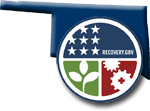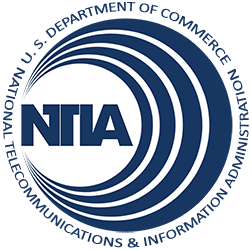Broadband’s ability to expand educational and employment opportunities is especially meaningful for Americans who are deaf or hard of hearing, a community that faces unique challenges in education and that suffers from a rate of unemployment much higher than the national average. Communication Service for the Deaf, Inc. (CSD) intends to expand broadband adoption among people who are deaf and hard of hearing and provide them with online tools to more fully participate in the digital economy. The project proposes to employ a combination of discounted broadband service and specialized computers, technology training from an online state-of-the art support center customized to the community’s needs, public access to videophones at anchor institutions from coast to coast, and a nationwide outreach initiative. Thousands will gain online access to all the Internet has to offer, including sign language interpreters, captioned video services, and other content and functionalities designed especially to advance their educational, employment, and healthcare interests.
Oklahoma

| Grantee | Total Award | Type |
|---|---|---|
| Communication Service for the Deaf, Inc. | $14,988,657 | Sustainable Adoption |
| Oklahoma City University | $1,434,893 | Public Computer Centers |
| Oklahoma Department of Libraries | $2,333,250 | Public Computer Centers |
| Oklahoma Office of State Finance | $73,998,268 | Infrastructure |
| Oklahoma Office of State Finance | $3,815,185 | Broadband Data & Development |
| One Economy Corporation | $28,519,482 | Sustainable Adoption |
| Pine Telephone Company, Inc. | $9,472,078 | Infrastructure |
| University Corporation for Advanced Internet Development | $62,540,162 | Infrastructure |
Oklahoma City University (OCU), located in the heart of a lower-income community, will work with residents and partners to address the needs for educational resources, English language instruction, and workforce training. Many residents in this part of Oklahoma City do not have access to a computer or the Internet and have not developed the digital literacy skills that are essential for employment or developing a small business. OCU’s Intergenerational Computer Center plans to address this problem with a multifaceted approach to providing community access to broadband. The project plans to open to the public an existing students-only 20-workstation computer center, construct a new 69-workstation center on campus, and deploy a “mobile PCC” van with 20 laptops to serve the community at large. The computer centers will provide connection speeds of up to 10 Mbps. OCU also plans to offer transportation to the computer centers to those in need.
Given the sparse, remote nature of many of Oklahoma’s rural counties, high-bandwidth applications like videoconferencing are an essential component to developing the state’s economy, enhancing public safety efforts, and improving educational opportunities in tribal and economically distressed areas. The Oklahoma Department of Libraries proposes to upgrade public computer centers at 45 libraries in 44 counties across the state, establish 36 library-based videoconferencing systems, deploy 339 new workstations, and upgrade broadband connections for 42 sites. Participating libraries were selected based on local poverty levels, broadband penetration in their service areas, and cost-effectiveness, among other factors.
The Oklahoma Community Anchor Network (OCAN), led by the Oklahoma Office of State Finance, is a
collaborative effort to extend and complete an existing state network, OneNet, to bring affordable broadband
service to community anchor institutions in rural and underserved communities across the state. The 59
counties in the project’s proposed service area have been unable to attract sufficient investment in high-speed
Internet infrastructure at affordable rates. This region encompasses some of the most economically distressed,
underserved areas in the northwestern and southeastern portions of the state. OCAN plans to construct 1,000
miles of new fiber to almost double the existing fiber in the OneNet network, and provide direct connections to
vital community organizations like Southeastern Oklahoma State University, Western Oklahoma State College,
Lawton Indian Hospital’s Indian Health Services Unit, and the state’s Council on Law Enforcement Education
and Training location. Improved broadband services for these organizations will greatly enhance education,
public safety, and healthcare opportunities in the region.
Project Components
Data Collection, Integration, and Validation:
This project was originally funded for two years of data collection. In September of 2010, this project was amended to extend data collection activities for an additional three years and to identify and implement best practices.
The 21st Century Information and Support Ecosystem project proposes to implement a comprehensive program of computer training, wireless Internet access, broadband awareness marketing, and online content and applications to residents of 159 affordable and public housing developments and low-income communities in 50 cities and towns across 31 states and the District of Columbia. The project plans to implement four principal programs: training 2,500 youth to become “Digital Connectors” who will then provide digital literacy training to others in their communities; deploying localized broadband networks in public housing developments; developing online content and applications aimed at low-income, low-literacy audiences.
The Broadband Grant for Isolated Southeastern Oklahoma/Choctaw Nation project plans to deliver affordable wireless broadband service to underserved areas of Southeastern Oklahoma, including the Tribal lands of the Choctaw Nation and its 10 counties. The project intends to directly connect 20 community anchor institutions, including Choctaw Nation agencies, public schools, public safety agencies, fire and police departments, and a health clinic. The project’s last mile network plans to offer broadband speeds ranging from 1 Mbps to 3 Mbps to as many as 7,000 households and 75 businesses. The network uses 3G universal mobile telecommunications systems (UMTS) technology over both HSDPA (High Speed Downlink Packet Access) and HSUPA (High Speed Uplink Packet Access) deployed over a 32-cell site, last mile wireless network. Backhaul services will be connected via microwave wireless links using 29 new microwave links and 289 new microwave backbone miles.
As part of a longstanding project to connect essential community anchor institutions across the country, and facilitate closer collaboration and long-term benefits for education, research, healthcare, public safety, and government services, the University Corporation for Advanced Internet Development (UCAID) proposes a comprehensive 50-state network benefitting approximately 121,000 community anchors. The project proposes a large-scale, public-private partnership to interconnect more than 30 existing research and education networks, creating a dedicated 100-200 Gbps nationwide fiber backbone with 3.2 terabits per second (TBps) total capacity that would enable advanced networking features such as IPv6 and video multicasting. The project plans to connect community anchors across all disciplines into virtual communities with shared goals and objectives, including colleges, universities, libraries, major veterans and other health care facilities, and public safety entities, with additional benefits to tribes, vulnerable populations, and government entities.
